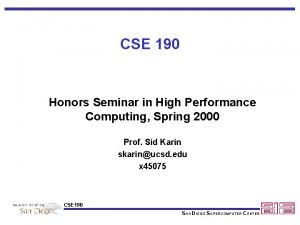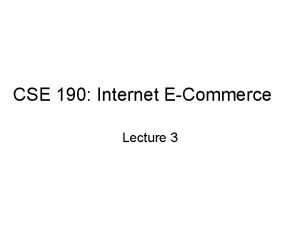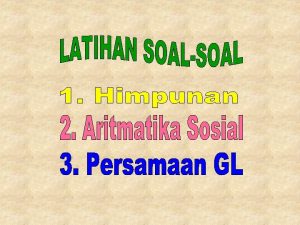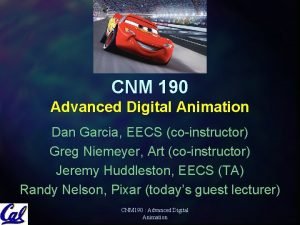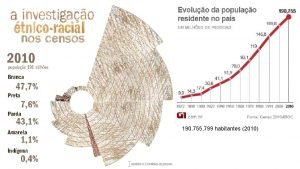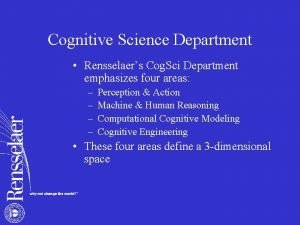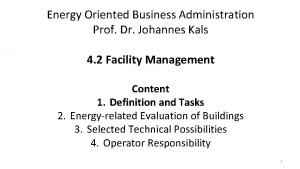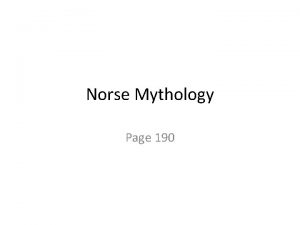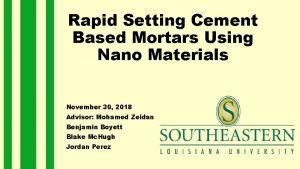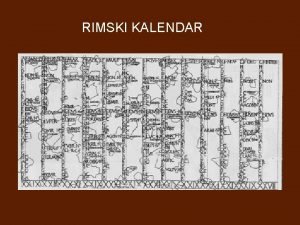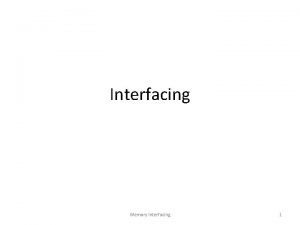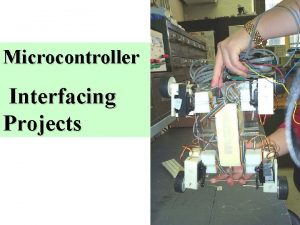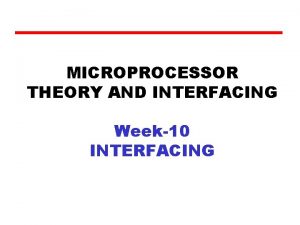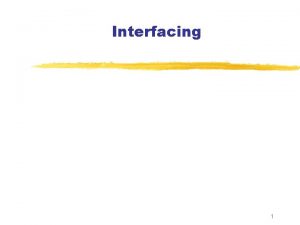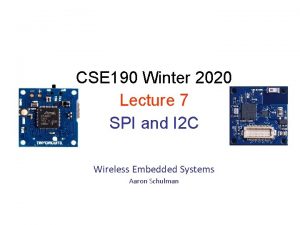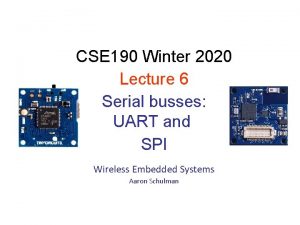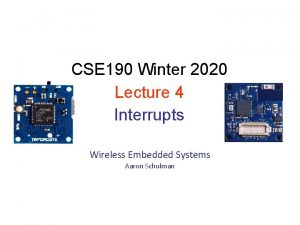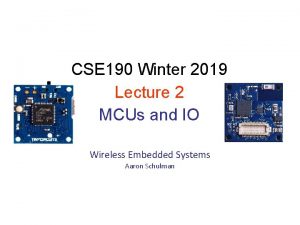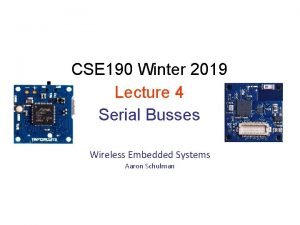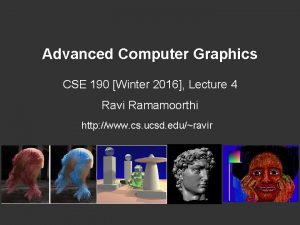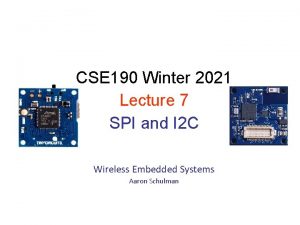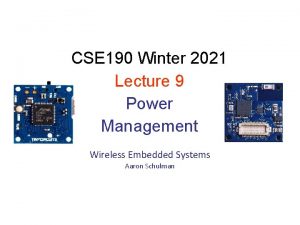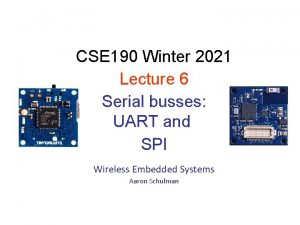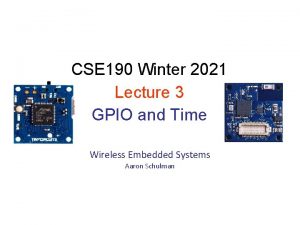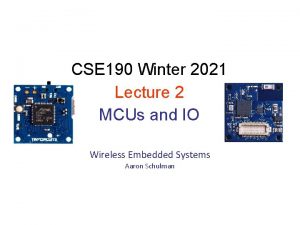CSE 190 Winter 2020 Lecture 11 Interfacing with


















- Slides: 18

CSE 190 Winter 2020 Lecture 11 Interfacing with The Analog World Wireless Embedded Systems Aaron Schulman

We live in an analog world • Everything in the physical world is an analog signal – Sound, light, temperature, pressure • Need to convert into electrical signals – Transducers: converts one type of energy to another • Electro-mechanical, Photonic, Electrical, … – Examples • Microphone/speaker • Thermocouples • Accelerometers 2

Going from analog to digital • What we want… Physical Phenomena Engineering Units • How we get there? Physical Phenomena Voltage or Current Sensor Engineering Units ADC Counts ADC Software 3

Representing an analog signal digitally • How do we represent an analog signal (e. g. continuous voltage)? – As a time series of discrete values On MCU: read ADC data register (counts) periodically (Ts) Voltage (continuous) Counts (discrete) 4

Choosing the sample rate • What sample rate do we need? – Too little: we can’t reconstruct the signal we care about – Too much: waste computation, energy, resources 5

Shannon-Nyquist sampling theorem • If a continuous-time signal contains no frequencies higher than it can be completely determined by discrete samples taken at a rate: , • Example: – Humans can process audio signals 20 Hz – 20 KHz – Audio CDs: sampled at 44. 1 KHz 6

Use anti-aliasing filters on ADC inputs to ensure that Shannon-Nyquist is satisfied • Aliasing – Different frequencies are indistinguishable when they are sampled. • Condition the input signal using a low-pass filter – Removes high-frequency components – (a. k. a. anti-aliasing filter) 7

Do I really need to filter my input signal? • Short answer: Yes. • Longer answer: Yes, but sometimes it’s already done for you. – Many (most? ) ADCs have a pretty good analog filter built in. – Those filters typically have a cut-off frequency just above ½ their maximum sampling rate. • Which is great if you are using the maximum sampling rate, less useful if you are sampling at a slower rate. 8

Choosing the range • Fixed # of bits (e. g. 8 -bit ADC) • Span a particular input voltage range • What do the sample values represent? – Some fraction within the range of values What range to use? Range Too Big Range Too Small Ideal Range 9

Choosing the granularity • Resolution – Number of discrete values that represent a range of analog values – 12 -bit ADC • 4096 values • Range / 4096 = Step Larger range less info / bit • Quantization Error – How far off discrete value is from actual – ½ LSB Range / 8192 Larger range larger error 10

Converting between voltages, ADC counts, and engineering units • Converting: ADC counts Voltage • Converting: Voltage Engineering Units 11

A note about sampling and arithmetic* • Converting values in fixed-point MCUs float vtemp = adccount/4095 * 1. 5; float tempc = (vtemp-0. 986)/0. 00355; vtemp = 0! Not what you intended, even when vtemp is a float! tempc = -277 C • Fixed point operations – Need to worry about underflow and overflow • Floating point operations – They can be costly on the embedded system 12

Try it out for yourself… $ cat arithmetic. c #include <stdio. h> int main() { int adccount = 2048; float vtemp; float tempc; vtemp = adccount/4095 * 1. 5; tempc = (vtemp-0. 986)/0. 00355; printf("vtemp: %fn", vtemp); printf("tempc: %fn", tempc); } $ gcc arithmetic. c $. /a. out vtemp: 0. 000000 tempc: -277. 746490 13

Oversampling • One interesting trick is that you can use oversampling to help reduce the impact of quantization error. – Let’s look at an example of oversampling plus dithering to get a 1 -bit converter to do a much better job… 14

Oversampling a 1 -bit ADC w/ noise & dithering (cont) Voltage uniformly distributed random noise Count “upper edge” of the box ± 250 m. V Vthresh = 500 m. V 375 m. V Vrand = 500 m. V 1 N 1 = 11 N 0 = 32 0 0 m. V Note: N 1 is the # of ADC counts that = 1 over the sampling window N 0 is the # of ADC counts that = 0 over the sampling window 15

Oversampling a 1 -bit ADC w/ noise & dithering (cont) • • How to get more than 1 -bit out of a 1 -bit ADC? Add some noise to the input Do some math with the output Example – 1 -bit ADC with 500 m. V threshold – Vin = 375 m. V ADC count = 0 – Add ± 250 m. V uniformly distributed random noise to Vin – Now, roughly • 25% of samples (N 1) ≥ 500 m. V ADC count = 1 • 75% of samples (N 0) < 500 m. V ADC count = 0 16

Can use dithering to deal with quantization • Dithering – Quantization errors can result in large-scale patterns that don’t accurately describe the analog signal – Oversample and dither – Introduce random (white) noise to randomize the quantization error. Direct Samples Dithered Samples 17

Selection of a DAC (digital to analog converter) • Error/Accuracy/Resolution: Quantizing error represents the difference between an actual analog value and its digital representation. Ideally, the quantizing error should not be greater than ± 1⁄2 LSB. Output Voltage Range -> Input Voltage Range • Output Settling Time -> Conversion Time • Output Coding (usually binary) 18
 Cse 190
Cse 190 Cse 190
Cse 190 Es war eine mutter
Es war eine mutter Winter kommt winter kommt flocken fallen nieder
Winter kommt winter kommt flocken fallen nieder Winter kommt winter kommt flocken fallen nieder lied
Winter kommt winter kommt flocken fallen nieder lied 01:640:244 lecture notes - lecture 15: plat, idah, farad
01:640:244 lecture notes - lecture 15: plat, idah, farad S = bilangan asli
S = bilangan asli Cnm 190
Cnm 190 190 words
190 words Lion poids 190 kg
Lion poids 190 kg Vertical mill
Vertical mill 190 755 799
190 755 799 Cogsci 190
Cogsci 190 Dr kals
Dr kals W fxd
W fxd Norse creation
Norse creation Da 2823
Da 2823 Adva 190
Adva 190 Rimski broj d
Rimski broj d
